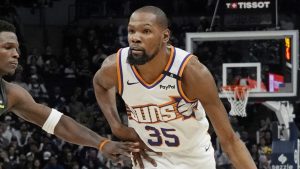MBW Views is a series of op/eds from eminent music industry people… with something to say. The following MBW op/ed comes from Dan Goldberg, a fan engagement expert with 20+ years of experience at the intersection of culture, commerce, and community across the music, entertainment, and sports industries. Goldberg, who has a background in entertainment law, previously led global e-commerce, CRM, tour merchandising, and VIP experiences at Warner Music Group, and later launched the music and entertainment division at Fanatics, where he spearheaded collaborations between artists and major sports brands. Goldberg says that over the course of his career, he has delivered “more than $1 billion in revenue through talent-first strategy and cultural commerce”.
The music industry and its prognosticators love to talk about superfans. From executives and investors to analysts and artists, everyone is talking about them nonstop.
We’re designing apps around them and designing optimized funnels to squeeze every last dollar out of them. There is, however, no doubt that superfans are the holy grail. They spend more. They buy every vinyl variant, the pennant, and VIP package.
This isn’t a new concept, it just became a buzzword that went industry viral during Covid. Was it everything coming to a halt that made people realize you need to actually engage fans in a deliberate and meaningful way? The reality is that superfans have always been crucial to artists. And, let me be clear from the start – without incredible music, none of this matters, even with the most elaborate storytelling.
But, the part that we seem to be forgetting is that fans don’t just magically appear, they need to be cultivated and nourished.
And we’re not building them.
I believe that the opportunity is to stop treating superfans as the end-all be-all, and instead to construct pathways that acquire casual fans and communities that convert them into diehards. This means placing more investment in the middle. Acquisition leads to identity, which, if done right, becomes conversion.
“There is no debate that superfans have always and will continue to drive outsized and meaningful value, but the playbook for how to cultivate them is too narrow.”
This recent obsession isn’t simply a distraction. It has blinded us to the larger, and longer-term opportunity: the casual fan. The one who streams a song or stumbles upon a 15-second TikTok and thinks, “this is rad.” They’re not buying tickets or waiting in line for merch yet. But they could be, and we’re ignoring them.
We’re not creating real artist value, the long-term and scalable kind. This can’t just be about deepening the base, we need to widen the reach.
There is no debate that superfans have always and will continue to drive outsized and meaningful value but the playbook for how to cultivate them is too narrow. And, to be clear I’m not advocating a substitutional strategy, but a complementary one.
I grew up in the hardcore scene watching this every weekend at a local VFW, or CBGBs. Hardcore is a masterclass in attracting casuals and giving them a path because it’s a lifestyle (As an aging adult I still consider myself a hardcore kid).
You’d hit a show because your friend dragged you there, or in my days you’d get a flyer. Then you’d buy a shirt off the folding table. Next thing you know you’re coming to every show. Start a band, a zine, a label. It was definitely inclusive but also built on identity. I was given the room to explore, and then got pulled deeper when I was ready. Hardcore demonstrates the possibilities that occur when identity is not only natural but placed before monetization.
But who is the casual fan? There are tons of them all in various stages:
- “Lean back listeners” who are being fed music via algos. They receive, they don’t seek
- “Light followers” who follow on socials, maybe like a post or save a song
- “Explorers,” they pop in and out, maybe buy a shirt
The thing is, they’re not all the same, and we’re not meeting them where they’re at and engaging them. This is where audience segmentation comes in.
The superfan thesis is about marketing to the converted via limited merch drops, Discord invites, exclusive vinyl colorways, meet-and-greets, etc.
Awesome, and they work, but only if you’re already on the inside. The casual fan, however, is stuck on the street, peeking through a broken VFW window. The current conversation is completely lopsided.
So, how do we reverse-engineer this?
It has to begin at the absolute top. Who’s discovering the artist for the first time? Where are they? What signals are they responding to? Who is the artist and what do they stand for? This needs to be translated in a way that invites curiosity from new fans rather than demands loyalty.
There are a bunch of recent examples, both inside and out of music, where massive reach doesn’t translate. Why? Because they often don’t go narrow and deep, and just wide. Memes and moments. But, this often doesn’t translate to ticket sales, merch, or long-term fandom. Why? Because the bridge between casual and committed hasn’t been built. The middle period, where artist development happens, seems to be a lost art.
But there are current blueprints for how it’s done.
Tyler, The Creator perfected it by creating a world around his artistic vision – story arcs, design aesthetics, and, in his words, delusion. He doesn’t just make music, he has meaning. But, the sad reality is that not everyone is Tyler. He was authentic and forged connection, not just product.
Grateful Dead are arguably the architects of superfan culture. How did they do it? Not by gatekeeping, but by inviting. They didn’t force fandom. They encouraged trading bootlegs, creating community, and ultimately decentralizing fandom pre-Internet. That’s the thing, so much of the current approach is about utilizing tech, but let’s remember that it’s just a vehicle, and the real work starts with a community-building philosophy. This is what creates generational commercial loyalty.
And this isn’t just about music. It’s a pattern across every corner of culture.
Nike: Superfans virtually line up for the drops in the SNKRS app. Nike’s secret weapon has always been bold storytelling. That’s what pulls in a new wave of fans.
Peloton: A cult-like community that is bigger than bikes and fitness because it was rooted in belonging.
Barbie: This wasn’t nostalgia — it was reframing culture. It massively overperformed because the film turned skeptics into believers by nailing the sweet spot between legacy, reinvention and cultural gender norms.
ECONOMICS
OK, let’s talk economics to illustrate the point.
Say you acquire 50,000 casual fans at $3–$5 each you have $150,000–$250,000 in acquisition costs.
If you can then convert 3% of those to superfans, with each superfan being worth $150-$300 annually in merch, tickets, and VIP. That’s $225,000 – $450,000 in return. Break-evenish at worst. But it compounds financially, not to mention they self-identify, market and promote the artists not only for free, but are paying you to do so.
It takes a system where, like my experience in hardcore, commerce is identity (ironic since that community loves to pretend it’s anti-commerce). Content becomes the touchpoint, and your merch tells the story. But community doesn’t happen overnight. It takes time, and one day, it just clicks. Fans begin to self-organize, and you have a platform, not just a product, because they want to feel belonging and a part of something.
It used to be album first, tour second, and merch third (if at all). Then, the best merch companies flipped that (e.g. Bravado) and made merch the cultural primer, the gateway drug. You wear it before you know the setlist. Now? It’s actually cool to wear merch to the show. This was not always the case.
It’s not about big product lines. Often, the most impactful campaigns start simple with a tight capsule: three products, one point of view, and the vision to scale through storytelling, and not through surplus. It must be cohesive to the brand identity and overall vision. The best artists at this have one creative director who handles album packaging, consumer products, tour marketing assets etc. (e.g., twenty one pilots).
The question is not and has never been whether superfans matter. Those in the artist and fan business have always known this. It’s about whether you’re building the kind of world that creates a curiosity that casual fans want to step into.
Most, sadly, are not. But the ones that are, well, they’re building empires. It’s not just about owning audience and the direct-to-consumer business. If you’re serious about building fandom, I mean, really serious – you can’t just double down on the diehards, you need to start on the edges.
The future isn’t about chasing superfans; it’s about creating more of them.Music Business Worldwide








